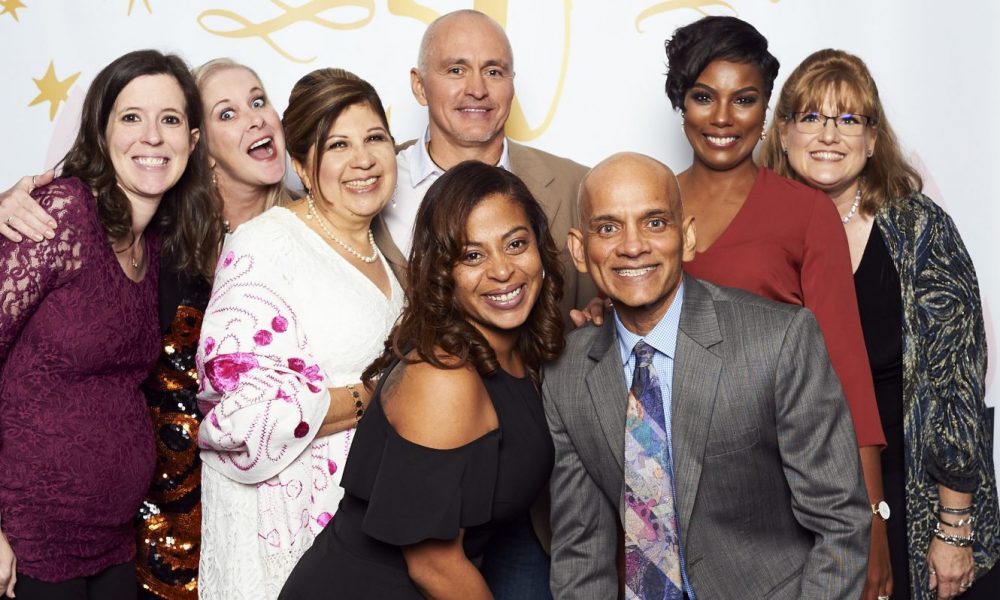

Today we’d like to introduce you to Kelly Perdue and Cathleen Thomas.
In 1968, heart surgeons Dr. Michael DeBakey and Dr. Denton Cooley were making medical history in Houston’s Texas Medical Center with early heart transplants. But the quest for organ donors was not being met. At dinner one evening, five Houston women discussed how they could donate their organs when they died. They discovered that no formal way to donate organs existed. The idea was too new, organ procurement wasn’t even a part of the language nor was organ donation.
These five women, Dr. Joan Anderson, Glen Karsten, Louise Johnson, Esther Phillips, and Louise Robertson took action and established The Living Bank is a nonprofit organization and it became the first organ donor registry in the United States of America. They researched and developed educational materials on organ donation and the transplant process, elected Glen Karsten to be the organization’s first president, and received a small grant from a Houston foundation.
The Living Bank’s first office was in a rented trailer in the Texas Medical Center in a parking lot across from Houston Methodist Hospital.
Back in 1968, signing donors was no easy task. The Living Bank’s enthusiastic and energetic founders, traveled through Texas conducting seminars with police and emergency medical personnel, made presentations to religious and civic groups and encouraged newspapers to write articles. Soon, Glen Karsten was giving interviews to national publications and TV and radio shows. Within the first few months of operation, over 100,000 letters requesting more information poured in, volunteers came forward and over 1,000 people registered as organ donors. As the years went by, Glen received letters of thank yous from three presidents, all of whom, signed up to be organ donors and encouraged Americans to do so.
It is remarkable how much these five women accomplished before technology entered our lives. They did not have computers, the internet, email, Facebook, Twitter, or an iPhone. They had binders – yes binders and maps lining the walls, the U. S. Postal Service, and the use of rotary phones.
The Living Bank is a grass-roots success case. Through the efforts of our founders, they established a solid foundation on which we continue to build upon.
Over the years, The Living Bank has emerged as an important contributor to the health and well-being of our community. Because of the dramatic, ever-increasing rise in the number of people needing a transplant, The Living Bank’s primary focus is living organ donation – providing critical information, support, and advocacy that can reduce wait times from years to months.
We’re always bombarded by how great it is to pursue your passion, etc. – but we’ve spoken with enough people to know that it’s not always easy. Overall, would you say things have been easy for you?
As of today, July 3, 2019, there are over 113,000 Americans on the National Transplant Waiting List and 22 Americans die every day while waiting for a transplant. The need for organs is vastly greater than the number of organs available through deceased donors. Of those waiting, an astounding 85% are waiting for a kidney and 12% are waiting for a liver lobe. Both can be donated by a living organ donor. That is 97% of the waiting list. Studies have shown that 1 in 4 American would consider donating if they knew of someone in need. Then why hasn’t living organ donation increased in response to this critical need?? Because those in need AND the public don’t know it is an option.
When a person reaches kidney failure there are two options to stay alive, dialysis or a kidney transplant. Dialysis is a painful treatment that, on a good day, only provides 10-15% of the body’s kidney function. And because of its impact on the body, many people become too ill and are no longer healthy enough to undergo a transplant.
Many on the transplant waiting list did not know living organ donation was an option until they began dialysis and were put on the waiting list. The Living Bank gets that information to the people that need it earlier in hopes they can identify a living donor before they have to begin dialysis, and if dialysis is needed, it is a much shorter period of treatment until a transplant can be performed.
The Living Bank believes no one should die waiting for a transplant just because they did not know living organ donation was an option.
So, as you know, we’re impressed with The Living Bank – tell our readers more, for example, what you’re most proud of as a company and what sets you apart from others.
Although we were the first organ donor registry in the nation, today our primary focus is living organ donation. Our programs and services include clinical social work services to the Texas Medical Center’s transplant programs; live and on-demand webinars for professionals with continuing education credit; online resources for the public; community newsletters; public education via onsite events, social media and through traditional media outlets; and responding to numerous inquiries from across the nation on organ donation and transplantation.
The Living Bank’s staff and licensed clinical social workers are always here to answer your questions at 1-800-528-2971 or you may visit us at www.livingbank.org.
So, what’s next? Any big plans?
Last year, we celebrated 50 years along with the legacy of our founders, and we look forward to many more years of service to the transplant community. Areas of future focus include:
1) Launching a new initiative, Advocates for Life. Currently living organ donors complete a two-year federally mandated follow-up program. At the end of their follow up period there is nothing in place to provide support. The Living Bank will bridge that void. Our social workers, with combined transplant experience of 100 years, and our committed staff will foster lifetime relationships with and among living organ donors who desire a community of support after donation.
2) Arising from recent updates to federal guidelines, we are in a unique position to expand our Independent Living Donor Advocate (ILDA) social work services to areas outside of the Texas Medical Center (TMC) and Texas.
Historically, the transplant guidelines require an ILDA be identified to protect and promote the interests of the living organ donor, ensuring their decision to donate is informed and free from coercion. Presently, most ILDAs are staffed from within the transplant program; however, the new guidelines specify the ILDA cannot be associated with the transplant program in any capacity.
This happens to be precisely our area of expertise. Since 2009, The Living Bank has been providing entirely independent LDA services to the TMC transplant centers and to distant site locations in Texas. Our team of social workers has over 100 years of combined transplant experience. We have the know-how to fill this need!
Just celebrated our 50th last year!
Big things ahead. ILDA services.
Advocates for life, etc.
Contact Info:
- Address: Kelly Perdue
Cathleen Thomas
The Living Bank
4545 Post Oak Pl. Dr. suite 340
Houston, Texas 77027 - Website: https://www.livingbank.org
- Phone: 713-961-9431
- Email: info@livingbank.org
- Instagram: livingbank
- Facebook: TheLivingBank
- Twitter: @TheLivingBank
- Other: https://www.youtube.com/user/livingbank/about
 Image Credit:
Image Credit:
Guillermo Diaz, Killy – http://killyphotography.com
Getting in touch: VoyageHouston is built on recommendations from the community; it’s how we uncover hidden gems, so if you know someone who deserves recognition please let us know here.

















